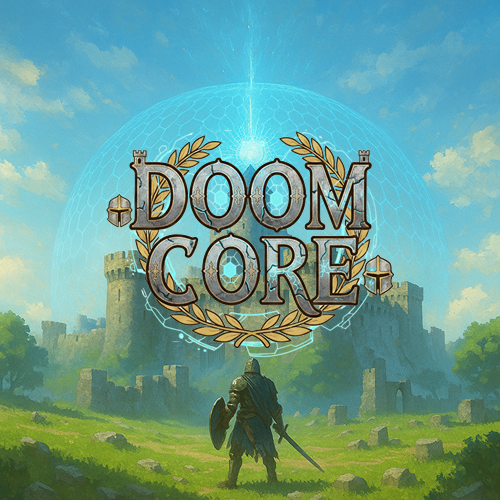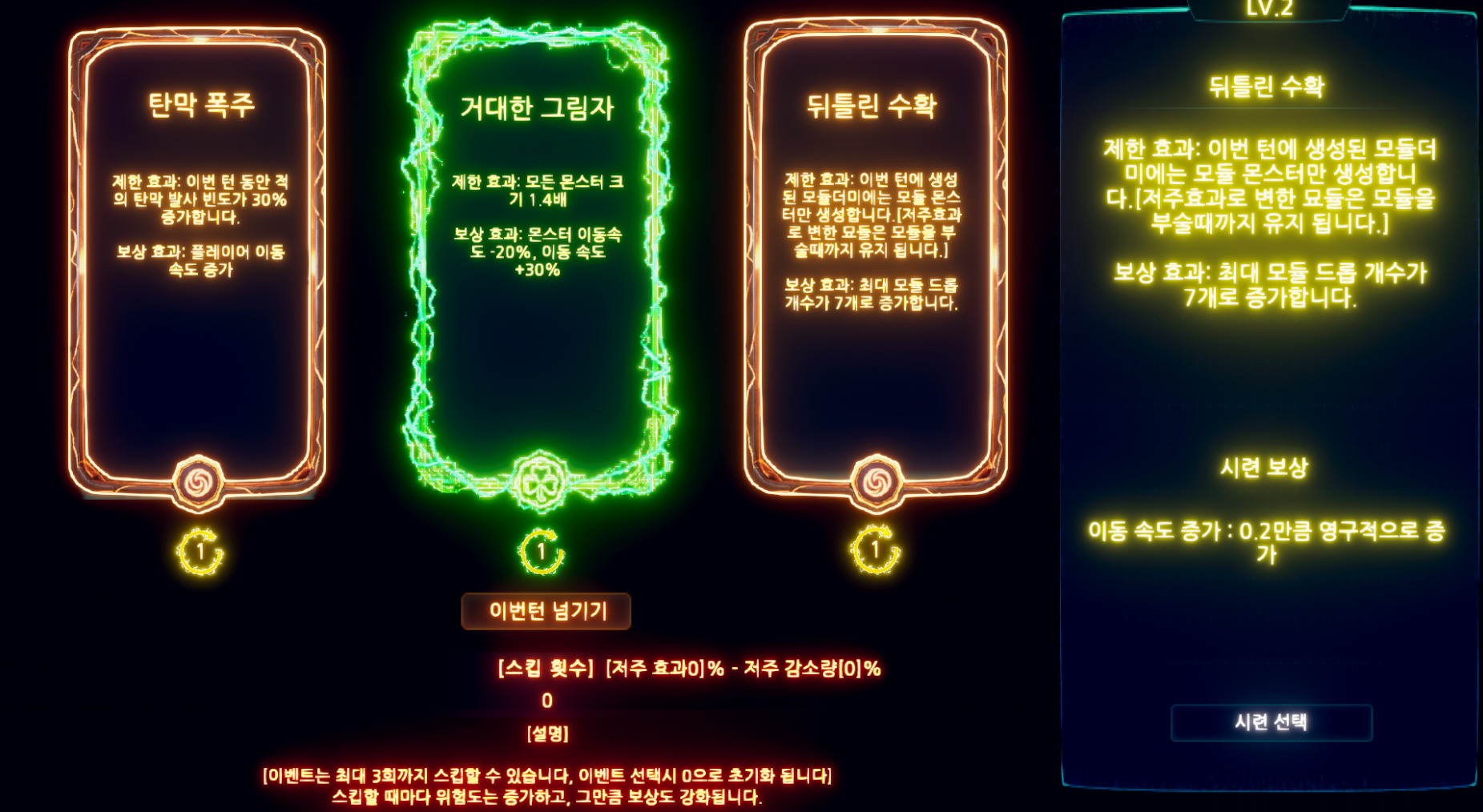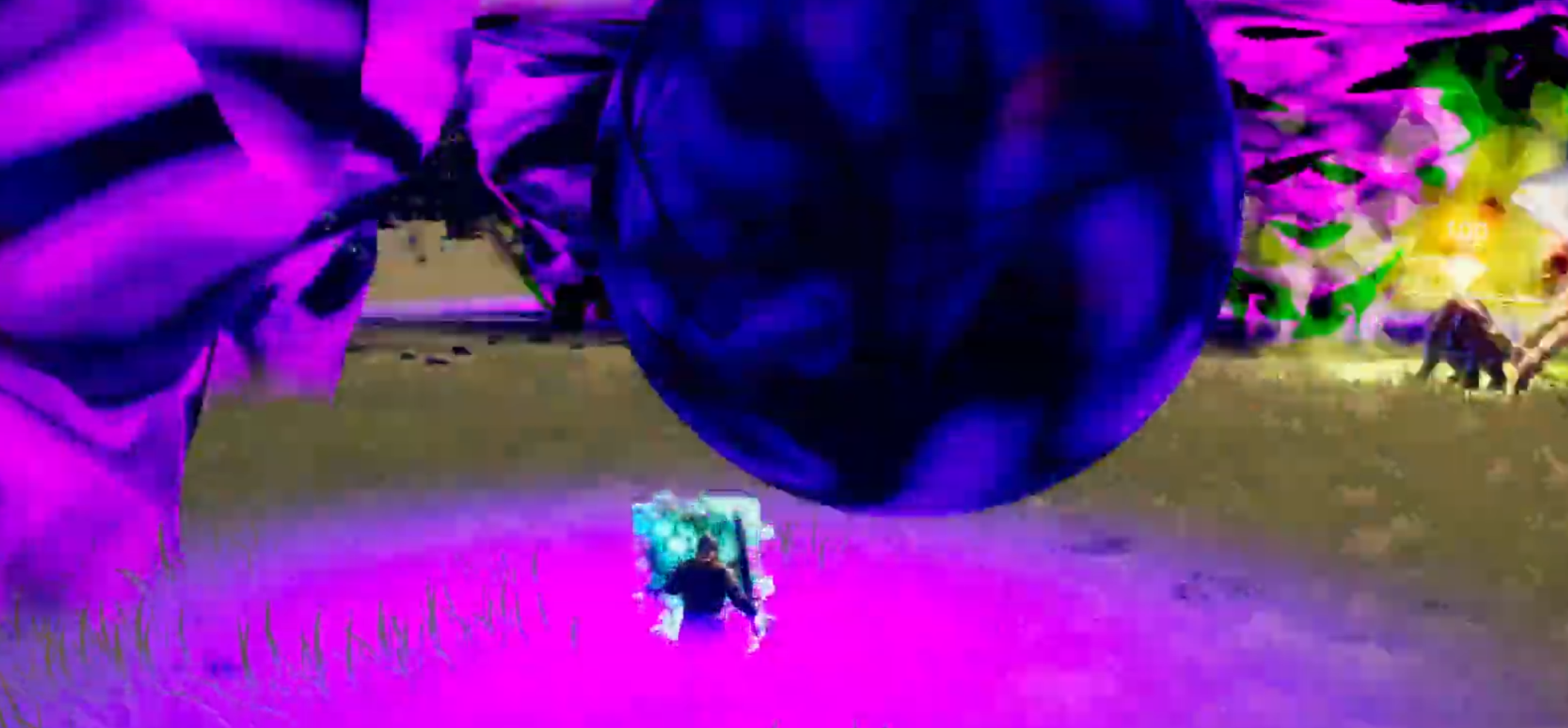
Doomcore
게임 정보


{title} 구매
{0} 이후 할인 종료
게임 설명

The Creative Process — The Story Behind Doomcore
DoomCore is a one-man development project that combines the "feel of shield action with the depth of strategic survival." From its initial conception to its current form, it is a hardcore action-survival game born through countless experiments and iterations. This article introduces the process of creating DoomCore and the developer's philosophy behind it.
1. Initial concept and idea – From simple action to strategic survival
Doomcore's starting point was clear: "Let's create the real pain of being hit, and the thrill of blocking." Early on, the goal was a pure action game utilizing shields. We built a basic combat system with blocks, counterattacks, and evasions, and experimented with a rhythmic, rhythmic approach to striking.
However, repeated testing revealed its limitations. Simple action alone wasn't enough to maintain a certain level of tension. So, we decided to combine "strategic choice" and "axis of growth" in the combat system. This combination became the core structure of Doomcore and the foundation of the game today.
2. System Design – Battle + Growth + Choice Loop
The new direction was clear: 'Combat must be immediate, while growth and choices must be long-term.'
Under this philosophy, the following systems were created:
Module Collection & Auto Turret Installation: Activate automatic defense devices using modules obtained during battle.
100-turn loop structure: An endless survival challenge amidst waves of enemies that become stronger with each turn.
Maintenance Time Shop: After the turn ends, strengthen weapons, magic, and players with resources.
Event Selection System: A structure that provides both curses and rewards, inducing a “risk vs. return” judgment every time.
These four systems interlock, immersing players in a cycle of combat, growth, and choice.
3. Prototyping – Rapid iteration by feature
Doomcore's prototype started with simple objects and collision detection. The first thing to validate was the **hit rhythm**.
Basic combat prototype
Implementing shield judgment, bullet hell, and collision damage logic
Test your attack timing and counterattack rhythm
Form switching experiment (sword ↔ magic)
Experiment to change battle form every 3/5/7 turns
We conclude that the structure that switches every 5 turns is the most stable.
Barrage system experiment
Expanding the melee-focused attack pattern into a barrage format
Complete "hyper-action" of blocking with shields and finding evasive routes.
Event system datafication
The event is designed with a curse + reward structure.
Securing scalability with a data-driven structure based on ScriptableObject.
4. Design iteration and balance adjustment
Reward vs Risk Function Design
The player's choices determine the game's tension. Skipping an event increases the risk (curse) and the rewards. This "risk-reward curve" maintains the strategic tension of "Should I fight now or wait?" at every turn.
Improved turret/module system
Initially, the system was manual installation, but due to concerns about disrupting the flow of battle, it was changed to an "automatic module installation" system. As a result, action and strategy are seamlessly linked.
Difficulty Curve Design
We've fine-tuned the enemy patterns and reward table, dividing the 100 turns into early, mid, and late stages. This ensures that the game maintains gradual tension and a sense of accomplishment even on repeat playthroughs.
Automatic difficulty adjustment system
Doomcore dynamically adjusts difficulty based on the player's health.
Maintaining high stamina adds stronger patterns, increasing the challenge.
When your health is low, some milder patterns will appear, giving you a chance to survive.
This system allows users with different skill levels to enjoy the game at their own pace.
5. Completing the battle loop
Doomcore's combat loop isn't about simple repetition; it's about immersion, breathing, choice, risk, and reward.
Battle → Maintenance Time → Shop → Select Event → Battle Again
Combat: Wave survival using shields and magic, switching to magic mode every 5 turns.
Maintenance Time: Organizing Resources and Preparing for Your Next Strategy
Shop: Reinforcement, Replacement, Resource Distribution
Event Selection: Simultaneous delivery of curses and rewards
Loop repetition: creating new tension and growth
This loop breaks up monotony and provides the player with a constant sense of "What will I choose this turn?"
6. Development Philosophy – Impact, Rhythm, and Focus
Every system in Doomcore is built around one thing: "impactful combat." The rhythm of combat, the timing of counterattacks, the sound of hits, visual effects, camera vibrations... all of these elements work together to convey the "weight of each and every blow."
As a one-man development, it's not perfect, but countless gimmick experiments and repetitive tests have gone into overcoming those limitations. Knowing that each frame, each sound, each counterattack timing can have a profound impact on the player, we meticulously refine every moment.
7. Experiments that are still ongoing
Doomcore is not a finished game, but a constantly evolving project. New events, core systems, enhancement loops, and improvements to combat experience are constantly being added. With each update, we adjust the balance and refine the structure so that player choices truly impact the rhythm of combat. Controls
| key | Function Description |
| W / A / S / D | Player movement |
| E | evasion |
| SPACE | Jump |
| Left mouse click | attack |
| Right click the mouse | Block with a shield (sword form only) |
| TAB | Change magic attribute (magic form only) |
| ESC | Open Menu / Settings |
Product Reviews
Please comply with the terms and conditions when writing a post.
November 2025 New Releases

Brew
USD 19.99
USD 15.99

Brew
Face the challenges of The Tower as you enroll into the Alchemy Academy in this action-packed, third-person, roguelite. Brew potions to boost yourself in the heat of battle and use multiple weapons to defeat dangerous foes and pass your exams!
.jpg)
SCP-EXODUS
무료
.jpg)
SCP-EXODUS
SCP EXODUS is a third-person survival horror game focused on time constraints and resource management. Players begin on the second basement level of the D-3 research facility, isolated by a toxic fog, and must use limited resources to reach the rooftop escape point.
_1762846348854.png)






